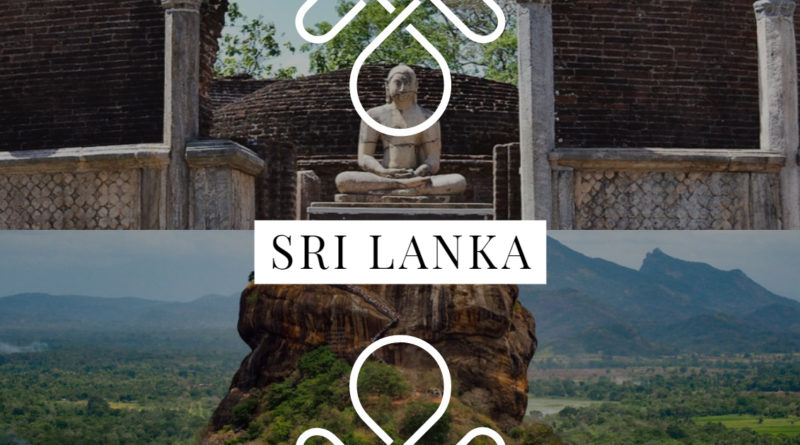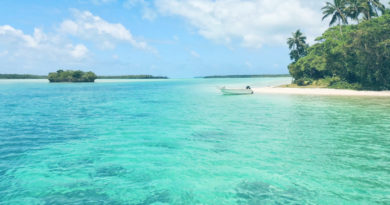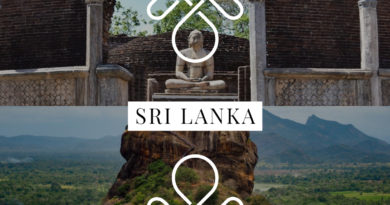What to do in Sri Lanka/ Things to do in Sri Lanka
Watersports in Sri Lanka
Watersports: Operators in the main resorts conduct diving expeditions and supply equipment. With over kilometers of fine beaches and several swimming clubs, Sri Lanks is considered as swimmers paradise. Windsurfing is gaining in popularity and facilities are located in Beruwela, Kalutara, Bentota, and Negombo. Water-skiing and yachting are available. Sport fishing is popular in Sri Lanka.
The ideal places for swimming is mostly on the west and south coast’s where the southwest monsoon is less strong than being on the east coast. The best time to get soaked in the water is from around December to March in the west coast and from November to Aril in the south coast. In wet season, April/May to October/November, is when you should be more careful as the seas likely to be bigger, according to the records, many people have indeed been drowned every year. Being alert at all time of swimming is a tip for your safety. Some naive swimmers who have a little knowledge about the sea condition may underestimate the danger or even unaware of it. In Sri Lanka, you should be more careful as there are a few life-saving patrols and there would be no-one to jump in and rescue you like some other country’s popular beaches.
Watch out for currents as some kind of currents, called rip, is dangerous. When water brought onto the beach by waves is sucked back to the sea, it formulates current that is strong enough to drag you out with it. Therefore, watch where people are swimming or check with reliable people where is safe to swim. The most essential thing is not to panic, a rip will weaken eventually.
Pollution is another deterrent to swimming is some places, for alternative, most luxury hotels in Colombo or other west and south-coast cities offer a very good swimming pool with abundance of facilities like spa and sauna.
Diving & Snorkeling in Sri Lanka
Sri Lanka is a excellent place for scuba diving and snorkeling. There are numerous dive sites along the island’s extended coastline which give you an occasion to see a fabulous marine life such as myriad tropical fish, coral, ship wrecks, angle fish, coral fish, and puffer fish.
Hikkaduwa and Tangalla located on the west coast are pretty good but Unawatuna on the south coast and Nilaveli on the east coast are even better.
At Nilaveli beach, you can take boat out to Pigeon Island, not far north of the beach, which is said to be a fine place to go snorkeling.
Other significant snorkeling sites are the Coral Sanctuary in Hikkaduwa where water is not so deep and plenty of coral are kept safe, at Mirissa where the water is clear, and at Polhena near Matara. There are also several interesting wreck drives at Unawatuna around Galle south of the island whereas Weligama and Tangalla provide good places for scuba dive.
Along the west coast the ideal time to snorkel and dive is generally from November to April. The waters are calmest from April to September along the east coast. During this season, many dive operators offer PADI courses for beginners as well as experienced people. There are wide selections of dives including open water, wreck dives, night dives and dives for those who just want to try dive out. Costs are varied depend on the completeness of equipment offered by the operator and the popularity of the place.
Diving shops where you can hire and buy diving and snorkeling equipment can mostly be found in Colombo and in major west coast resorts.
Wildlife and flora in Sri Lanka:
Wildlife and flora: One can visit numerous animal and bird sanctuaries and national parks.Sri Lanka is popular for its elephants, huge numbers of which can be seen in Udawalawe National Parks and Gal Oya at Handapangala. Other large mammals include bears, leopards, deer, Wild boars, monkeys , Grey Langur and porcupines. The native purple-faced Leaf Monkey is found in the higher hill regions. Sri Lanka is home to 38 species of amphibian of which 16 are unique to the island. Reptiles Species include two native crocodiles, five species of turtle, the endangered star tortoise, and many snakes. The five species of poisonous snake are sometimes seen in towns and villages.
The island’s flora deviates greatly, ranging from warm to tropical forests and from arid scrubland and plains to lush hills. There are rhododendron forests and tropical rainforests. Orchids and flowering trees can be seen in season.
Rafting & Canoe in Sri Lanka
There are varied profiles of hundreds of rivers and streams in Sri Lanka that flow out from the hills as well as many large and small irrigation lakes. It is the river’s flows and its surroundings that predominantly furnish with pleasure and excitement for water adventure trips. Some of the rivers like Kelani River in Kitulgala, are very popular with locals and tourists for its rafting capability with exhilarating glimpses into the wildlife and vegetation beyond the grassy river banks.
Mostly the white-water rafting, operated by Sri Lankan tour operators in the hill country, tenderly begins in the gentle section of the river through a lush tropical rain forest. Then it gradually rolls over to hissing water as the river start to flaw faster until it meets the rapid that could send your adrenaline pumping up in your body. A normal one or two hour rafting trip may utterly include section from grade 1 to 4. White-water rafting mostly is organized around a river in the areas of plains along rivers to the hill country.
Apart from exciting adventure of white-water rafting, a gentler outdoor activity such as canoeing will bring you to a tranquil world and give you another diverse looks of close-up scene of river bank vegetation, fauna, and villagers’ lifestyle. Popular choices for canoeing are the Kalu Ganga (Black River) and the Kelani Ganga flowing through picturesque hilly region where David Lean’s seven Academy Award winning film, ‘Bridge on the River Kwai’, was shot in the mid-nineteen fifties. The Hotel nearby the spot is always able to arrange a rafting and canoeing trip for you, though, prior arrangement will be better.
Boat cruise on rivers is another interesting and relaxing activity that is becoming more and more popular as in addition to boating in the sea. Boat cruise allow you to enjoy the scenery of river banks as well as the life style of rural settlers, the farther you go upstream the better it gets.
Cycling & Motorcycling in Sri Lanka:
Due to its compact size, variety of landscapes and easy accessibility to places of interest, Sri Lanka is an excellent destination for a cycling and motorcycling trip, motor vehicle for longer destinations and bicycle for a shorter one. Biking gives you an opportunity to get close to the people and nature; with this mode of transport it is easy to explore culture and locals’ lifestyle, for example, cities like Polonnaruwa and Anuradhapura, bicycles are ideal transports for getting around inspecting the ruins.
Taking your own bike into the country is not complicated as most of airlines are familiar with the transport. The procedure may vary from one airline to another so make sure that it is in good order prior to your departure. Taking your own bike is highly recommended since the quality of bicycle and motorbike rented out in Sri Lanka, even in Colombo, are rarely up to the international standard. Importantly, if you’d like to hire one, always check the breaks on any bike you are offered before putting your money down. Rented-mountain bike is hardly found in Sri Lanka and also some specific gears and parts are not available, so check it in advance, other normal parts may be found in ‘Adventure Sports in Lanka’ located in Colombo. Renting a motorcycle is easy, they are available in many places especially in Hikkaduwa, which demands you to supply a cash deposit, your passport number, and you may be required to leave your airline ticket as security.
Road conditions are varied as well as the diversity of country’s topography. It ranges from city’s smooth highways to bumpy roads, sometimes even loose surfaces. A standard mountain bike is compatible to all road conditions, however, except for the busy Colombo-Galle road, particularly Colombo and Beruwala and between Hikkaduwa and Matara, where the appalling driving, especially the bus drivers, make biking downright dangerous. For your safety and to avoid climbing steep hills, take a train from Colombo to Beruwala and start biking from there. It is easy to take a bike on a train although there may be some problems on the Colombo-Ford where you are required to bring your bike to the station two hour in advance. In other towns staff will usually assist you to the train however you may need to help yourself in some occasions. Roadmaps are available for route planning, many suggesting route to avoid traffic. Nevertheless, maps are not very clear on signs or road numbers, and do not give accurate indication of altitude and distance.
Be well prepared before setting off your journey. Allow for a series of locals’ reactions, ranging from staring, waving hands, shouting and cheering as encouragement especially when riding up a long up hill section. Women cyclists attract more attention than usual, especially one wearing short tight shorts and sleeveless tops. Sri Lanka’s weather is changeable. Always have not only sunscreen but also fleece and raincoat in hand, also, take plenty of water although there are a lot of small stalls (Kadys) along the way where you can buy coke, soda and refreshing coconut as well as biscuits. Above all, have your spare parts and gears prompt to be used and prepare to be self-sufficient during your journey.
Hiking & Trekking in Sri Lanka
Hiking is gaining its popularity in Sri Lanka which is a perfect place and offering plenty scope for great hiking. Hiking is like walking, at present, there is not an organized hiking industry, and it is just a matter of striking out on your own. Some hill country such as Kandy, Adam’s Peak, and World’s End has popular trails suitable for hiking and trekking.
Kandy is a second largest city in the country, after Colombo, and is the capital of the hill country in the center of the island. It is peaceful but interesting place by which there are many scenic walks through hills and forest dotted with small towns and lakes.
Adam’s Peak provides an opportunity for good stiff hiking as well as enjoying the stunning panoramic views and environment of the sacred mountain. Along the way, of 2,224 meters, to the top you will be surrounded by tropical rain forest and hardly-seen wild birds. Adam’s Peak has been a holy place visited by Buddhist pilgrims for over thousand years. At the peak of this sacred mountain, there is a footprint where most Sri Lankans and foreigners come to pay homage. In addition to that, sunrise in the early morning at the peak is an unforgettable experience.
World’s End and Horton Plains are simply amazing. You walk across the open grasslands and through the small forests of the Horton Plains to a spectacular viewpoint known as the world’s end. The 2,000 meter high plateau ends suddenly and the lowland is visible from almost 1,000 meters below. While there is abundance of wildlife in the area, monkeys and deer are often seen, leopards are a bit harder to spy.
Hiking is not difficult within these areas however light-weight hiking boots or sturdy shoes are always advised. A daypack for carrying water and personal items will be very useful during a journey.
Golf in Sri Lanka
A legacy from the British colonial period, golfing in Sri Lanka has many nostalgic links to this era. In previous days, wealthy English planters and governors spent their evenings at clubhouses, in an effort to revisit the English lifestyle in Sri Lanka. Today, the remnants of this period are put in good use by hordes of tourists and traveling executives enticed by the calm and soothing atmosphere of the golfing terrains.
There are three most excellent golf courses and popular in Sri Lanka are: The Royal Colombo Golf Club, The Nuwara Eliya Golf Club and The Victoria International Golf Club, Caddies are courteous and mannered and getting one of them is really contributing to the enjoyment of the game.



